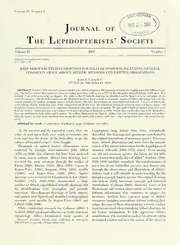
DTIC ADA442434: Iraq: Preemption or Paralysis PDF
Preview DTIC ADA442434: Iraq: Preemption or Paralysis
NATIONAL DEFENSE UNIVERSITY NATIONAL WAR COLLEGE IRAQ: PREEMPTION OR PARALYSIS Col JEFFREY S. JOHNSON, USAF 5601 5602 FUNDAMENTALS OF STRATEGIC LOGIC THE NATURE OF WAR SEMINAR H SEMINAR N PROFESSOR PROFESSOR MR. THEODORE M. LAVEN DR. ILANA KASS CAPT ROBERT BRANNON ADVISOR COL JOHN ZELINSKI Report Documentation Page Form Approved OMB No. 0704-0188 Public reporting burden for the collection of information is estimated to average 1 hour per response, including the time for reviewing instructions, searching existing data sources, gathering and maintaining the data needed, and completing and reviewing the collection of information. Send comments regarding this burden estimate or any other aspect of this collection of information, including suggestions for reducing this burden, to Washington Headquarters Services, Directorate for Information Operations and Reports, 1215 Jefferson Davis Highway, Suite 1204, Arlington VA 22202-4302. Respondents should be aware that notwithstanding any other provision of law, no person shall be subject to a penalty for failing to comply with a collection of information if it does not display a currently valid OMB control number. 1. REPORT DATE 3. DATES COVERED 2003 2. REPORT TYPE 00-00-2003 to 00-00-2003 4. TITLE AND SUBTITLE 5a. CONTRACT NUMBER Iraq: Preemption or Paralysis 5b. GRANT NUMBER 5c. PROGRAM ELEMENT NUMBER 6. AUTHOR(S) 5d. PROJECT NUMBER 5e. TASK NUMBER 5f. WORK UNIT NUMBER 7. PERFORMING ORGANIZATION NAME(S) AND ADDRESS(ES) 8. PERFORMING ORGANIZATION National War College,300 5th Avenue,Fort Lesley J. REPORT NUMBER McNair,Washington,DC,20319-6000 9. SPONSORING/MONITORING AGENCY NAME(S) AND ADDRESS(ES) 10. SPONSOR/MONITOR’S ACRONYM(S) 11. SPONSOR/MONITOR’S REPORT NUMBER(S) 12. DISTRIBUTION/AVAILABILITY STATEMENT Approved for public release; distribution unlimited 13. SUPPLEMENTARY NOTES The original document contains color images. 14. ABSTRACT see report 15. SUBJECT TERMS 16. SECURITY CLASSIFICATION OF: 17. LIMITATION OF 18. NUMBER 19a. NAME OF ABSTRACT OF PAGES RESPONSIBLE PERSON a. REPORT b. ABSTRACT c. THIS PAGE 32 unclassified unclassified unclassified Standard Form 298 (Rev. 8-98) Prescribed by ANSI Std Z39-18 IRAQ: PREEMPTION OR PARALYSIS The United States must preemptively strike the Iraqi regime before the regime obtains enough weapons of mass destruction to threaten U.S. security or to deter U.S. actions. Fundamental and vital U.S. national security interests, national safety and security and undeterred access and influence in the Middle East, demand a nuclear free Iraq. An irrational Iraqi dictator, armed with nuclear weapons, not only could but also likely would use these weapons against the U.S. to achieve his goals. The U.S. cannot live under the threat of massive destruction of its population by a madman. In addition, U.S. security is intimately tied to global economic security that is threatened by Iraqi expansionist desires. An Iraq armed with nuclear weapons would be difficult and extremely costly to stop from re-occupying Kuwait and seizing vast oil reserves. In fact, if Iraq obtained enough nuclear weapons, potentially all U.S. intervention in the Middle East could be prevented or deterred by the threat of massive destruction inside the United States. Therefore, the U.S. must take action to prevent Iraq from obtaining nuclear weapons and pursue an end-state of a nuclear-free, moderate Iraqi regime. Since diplomatic actions and the use of limited force have not stopped Iraq from its quest for nuclear weapons, the U.S. must take more forceful action of a preemptive strike against the Iraqi regime before it’s too late and too costly. The case for this action is made in two main parts—Situation and Case for Preemption. Describing the situation begins by articulating U.S. national interests along with some assumptions about the Iraqi regime. Next, the Statecraft-Tools-Relationship (STR) model is described and applied to Iraq. This model argues for a balanced use of the appropriate tool of statecraft to match the given environment of the state with whom the U.S. is interacting. The Iraqi threat is then detailed, followed by a discussion of the heretofore failure to adequately 1 2 counter this threat. The STR model will show the failures are due to an inappropriate match of statecraft tool to the situation. The mismatch has resulted in Iraq continuing to pursue nuclear weapons and a growing threat to U.S. national security. Finally, the STR model argues that the appropriate tool--given the environment in Iraq--is large-scale use of military force to eliminate any nuclear weapons or weapons programs and produce a regime change. The first section shows the use of force is necessary. The Case for Preemption section discusses deterrence and preemption and when the U.S. use of force must occur. In the second main part of this paper the case is made that the use of force must be preemptive before Iraq obtains a certain number of nuclear weapons that would be sufficient to deter U.S. action. A discussion on deterrence will show that if the U.S. does not act and allows Iraq to obtain nuclear weapons, then the U.S. will be placed in a position of being potentially deterred from acting in the Middle East. Given U.S. national interests, there is a threshold of acceptable cost or damage the U.S. would be willing to receive from Iraq in order to wage war with and eventually compel Iraq to follow U.S. demands. However, the acceptable cost is not unlimited. There is a cost beyond which the U.S. would not act. A credible threat of the use of sufficient force by Iraq against U.S. vulnerabilities not only could but would deter U.S. action— resulting in vital U.S. national interests being vulnerable to blackmail and manipulation by Iraqi leadership. This unacceptable cost could be measured in the number of operationally viable weapons of mass destruction owned by Iraq. For the sake of this paper, the argument of potential deterrence will be made with nuclear weapons. For example, ten Iraqi nuclear weapons placed inside U.S. cities with the real possibility to detonate would deter the U.S. Thus, in order to not be prevented from neutralizing a real, extant Iraqi nuclear threat, the U.S. must preemptively strike and destroy that threat—by either destroying Iraqi nuclear weapons manufacturing 3 capability, any existing nuclear weapons, or the Iraqi leadership currently preventing the removal of the nuclear weapons capability. Finally, the paper will conclude with a brief discussion of how U.S. military action should take place. The Iraqi and U.S. Centers Of Gravity (COG), risks, and recommended courses of action, and conflict termination will be discussed. I. SITUATION National Interests, Assumptions, and Desired End-State. There are two vital U.S. national interests applicable to the situation with Iraq. 1) No nuclear threat from a rogue state and avowed enemy.1 The Constitution of the United States established a government to provide an environment for the free exercise of basic inalienable rights. The threat of nuclear devastation to U.S. citizens runs directly counter to the fundamental values of “life, liberty, and the pursuit of happiness” from our Declaration of Independence. The U.S. cannot tolerate a dictator possessing and having the potential to use nuclear weapons against the United States. The assumption associated with this national interest is that Saddam Hussein is an actor who would use nuclear weapons indiscriminately to serve his interests. The Iraqi dictator is a declared enemy of the U.S. whose goals include removing U.S. forces and influence from the Middle East, eliminating Israel, annexing Kuwait, and establishing pan-Arabic control of the vast oil reserves. 2) Undeterred access and influence in the Middle East. Middle Eastern oil reserves are critical to the global economy. The U.S. economy is intimately linked with the global economy and therefore the vitality of the U.S. economy is directly related to the vitality of the global economy. It is vital to U.S. national interests to be able to prevent the 4 dominance and control of vast quantities of oil resources by a single dictator that most likely would have a severe negative impact on the global economy.2 In addition, the U.S. desires the promotion and growth of viable democracies around the globe. Thus, the survival of Israel as a free democracy is in the U.S. national interest. To help ensure Israel’s security the U.S. must be able to act undeterred in the Middle East. The assumptions accompanying this statement of national interest are that should Iraq obtain nuclear weapons, it would attempt to re-occupy Kuwait and gain control of the Kuwaiti oil fields and would use nuclear weapons in the process if necessary. Furthermore, Iraq would seriously threaten to use nuclear weapons against Israel if Iraqi leadership was convinced their ability to inflict serious damage against the U.S. would deter the U.S. from responding.3 END STATE: The desired end-state, taking into consideration these national interests and assumptions, is a nuclear-free Iraq with a moderate regime not desirous of nuclear weapons.4 Statecraft-Tools-Relationship Model. In order to logically argue for a certain course of action vis-à-vis Iraq, a model of the tools of statecraft was built to show the logic and beauty of a symmetry or balance of actions to circumstances. States have a wide spectrum of tools to relate to other states. The tools of statecraft are on a continuum of benefice or aid going to a state desirous of help and willing to cooperate to the other extreme of a total war with a completely belligerent state. They range from positive means, such as diplomacy and aid, to compelling means, such as sanctions, to the use of force in increasingly greater degrees, until reaching the far end of the continuum of total war. The tools of statecraft can be mapped graphically to depict the relationship between two states. (Figure 1) 5 Total War s t Total Aid- r e o cr ff Giving o e f f ev o i e ti sU os U.S. P Enmity Unity s t Other n eat me State hr e T ir u q e R Total War Total Aid- Threat Receiving Figure 1. On the horizontal axis is depicted the relations between states, ranging from enmity or hatred on the far left (negative end of the scale) toward total cooperation or unity on the far right (positive side of the scale). Above the horizontal plane are the sentiments and actions of the U.S. and below the horizontal axis are those of another state. In the U.S. section, on the right of the vertical axis, the scale represents increasing amounts of assistance and aid. On the left side of the vertical axis the scale represents an increasing amount of force used. In the other state’s section, on the right side of vertical axis are the increasing requirements for aid. On the left side of the vertical axis the scale represents an increasing threat posed by the other state to the U.S. A parabolic curve on both sides of the horizontal axis forming a mirror image marks the instruments of statecraft matched proportionately to the requirements of the environmental relationship with another state. This illustrates the ideal or perfect use of statecraft. As the good will or sentiments of the U.S. toward another state increase (moving to the right on the horizontal axis), then the corresponding amount of effort of positive aid and assistance increases 6 exponentially toward the point of ‘Total Aid-Giving’ or complete nation building. In the same manner, as bad will or fear of a growing threat from another state increases (moving negatively to the left on the horizontal axis), then so too does the amount of coercive force increase exponentially toward the point of ‘Total War’ on the far upper left quadrant. There is a corresponding negative passion of the state matched to the use of force against another state. Thus, the continuum of U.S. instruments of statecraft from ‘Total War’ toward ‘Total Aid’ is captured along the parabolic curve above the horizontal axis. Below the horizontal axis is the nature of the state with which the U.S. has a relationship. Starting from (0,0), the position of lukewarm neutrality, and moving horizontally (positively) toward the right, the goodwill and cooperation increase toward unity with the U.S. Moving horizontally toward the left (negatively) is an increasing amount of discord and animosity, toward enmity with the U.S. On the right side of the vertical axis going downward is an increasing amount of need for U.S. assistance. On the left side of the vertical axis is an increasing amount of threat toward the U.S. Putting these factors together the ideal mirror image against U.S. tools of statecraft is a parabolic curve. On the positive side, a state demonstrates increasing amounts of unity toward the U.S. and increasing requirements for aid toward the point of ‘Total Aid-Receiving’. This would be idealized by a failed state requiring complete governmental infrastructure rebuilding while fully embracing the dream to become a democracy. On the negative side, the curve moves from neutrality and no threatening capability toward the end point of ‘Total Threat’, that is, unlimited operational weapons of mass destruction combined with total hatred of the U.S. Combining the upper graph of the U.S. tools of statecraft with the lower graph of the nature of the state with whom the U.S. is interacting, the two parabolic curves form a mirror 7 image. The infinite points of ‘Total War’ mirrored by ‘Total Threat’ and ‘Total Aid-Giving’ mirrored by ‘Total Aid-Receiving’. This mirror image portrays the ideal use of the tools of statecraft proportionately matched to the appropriate corresponding value in the nature of the state with whom the U.S. is interacting. As Socrates said in Plato’s Philebus, there is an eternal and intrinsic beauty in symmetry.5 Thus, the idea of a symmetrical association of matching rising goodwill sentiment and correspondingly increasing aid on our side with a unity of goodwill and progressively greater needs on the recipient’s side is both naturally appealing and a logical use of resources. Likewise, it makes sense to use a balanced effort of force and passion against the threatening state. The greater the threat, the greater the need for increasing the amount of force used and combining it with a corresponding rise in passionate will against the enemy. If the use of tools of statecraft moves away from a mirror image, then it is moving away from the sense of symmetry and balance. While a full justification of this assertion is beyond the purview of this paper, following is a short example of how deviation from the ideal can be disastrous for a nation. Figure 2 is a quick look at the case of Vietnam. 8 Total War s t Total Aid- r e o cr ff Giving o e f f ve •U1o i e it •U3 sU Pos •U2 U.S. Enmity Unity •NV s t Vietnam n at e e m hr e T ir u q e R Total War Total Aid- Threat Receiving Figure 2 The threat from the North Vietnamese was arguably low toward the U.S. and its interests. This threat level was combined with high enmity toward the U.S. (point NV for North Vietnamese). However, as the U.S. applied increasing amounts of limited force, the will and passion of some Americans moved from negative to positive (point U1 to U2). Disproportionate or unbalanced match of force without negative sentiment resulted in the nation being torn apart. The SRT model would argue that point U3 would have been the more appropriate U.S. response to match the threat and resolve the conflict with proportionate force. Applying this model to Iraq, the situation could be graphically portrayed as in figure 3.
The list of books you might like

The 5 Second Rule: Transform your Life, Work, and Confidence with Everyday Courage

The Sweetest Oblivion (Made Book 1)

As Good as Dead

The Silent Patient

The School for Husbands

AR-M236 AR-M276
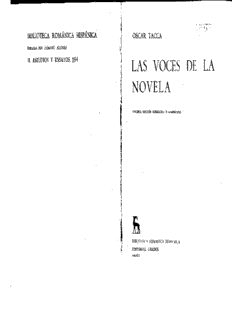
las voces de la novela
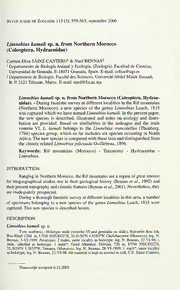
Limnebius kamali sp. n. from Northern Morocco (Coleoptera, Hydraenidae)

NASA Technical Reports Server (NTRS) 20060013221: The Hard X-ray 20-40 keV AGN Luminosity Function
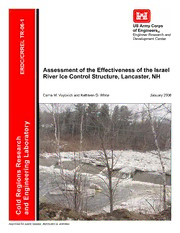
DTIC ADA442900: Assessment of the Effectiveness of the Israel River Ice Control Structure, Lancaster, NH

The postnational fantasy: essays on postcolonialism, cosmopolitics and science fiction
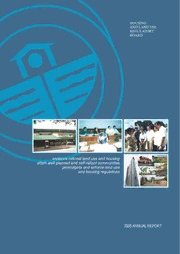
Annual Report 2005
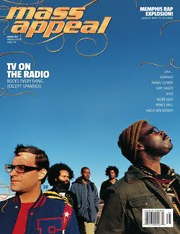
Mass Appeal Magazine 38
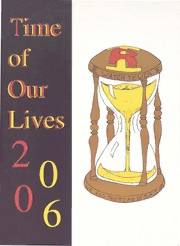
RIHS Watchtower 2006

Maryville College Catalog 2006-2008
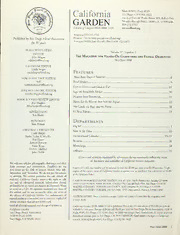
California Garden, Vol. 97, No.3, May-June 2006

Knowledge and employability : social studies grades 8 and 9
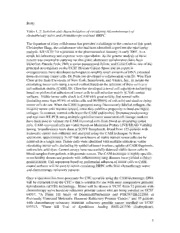
DTIC ADA453368: Gene Expression Analysis of Circulating Hormone Refractory Prostate Cancer
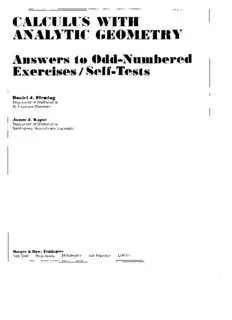
Calculus with analytic geometry

New records of Diptera from the Republic of Mordovia, Russia
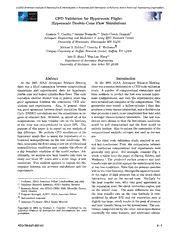
DTIC ADA455442: CFD Validation for Hypersonic Flight: Hypersonic Double-Cone Flow Simulations


